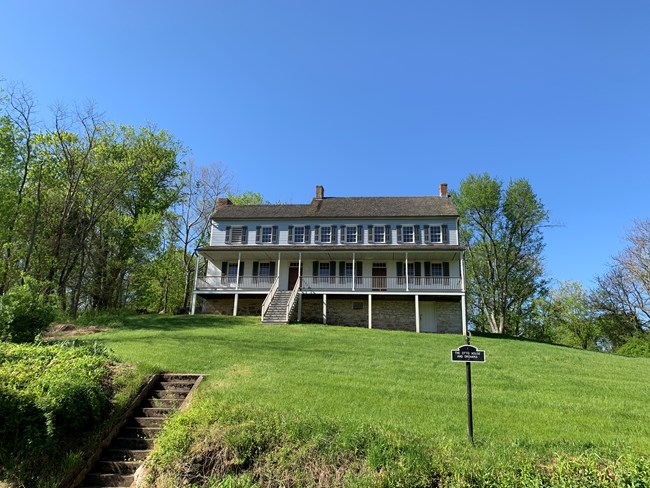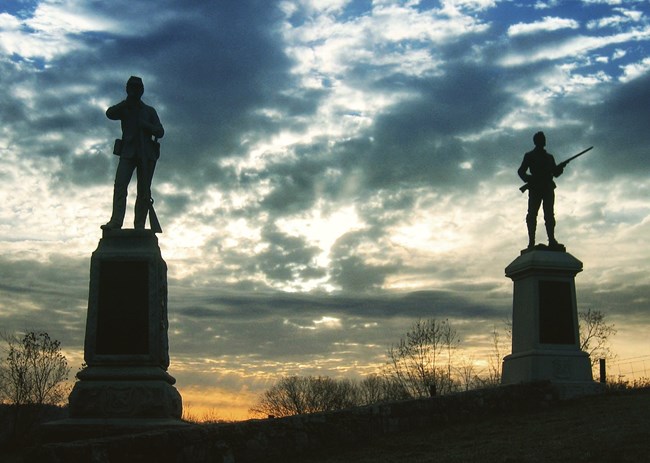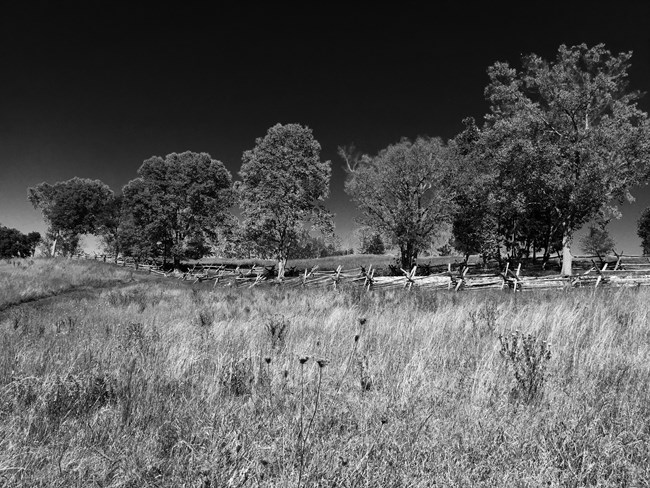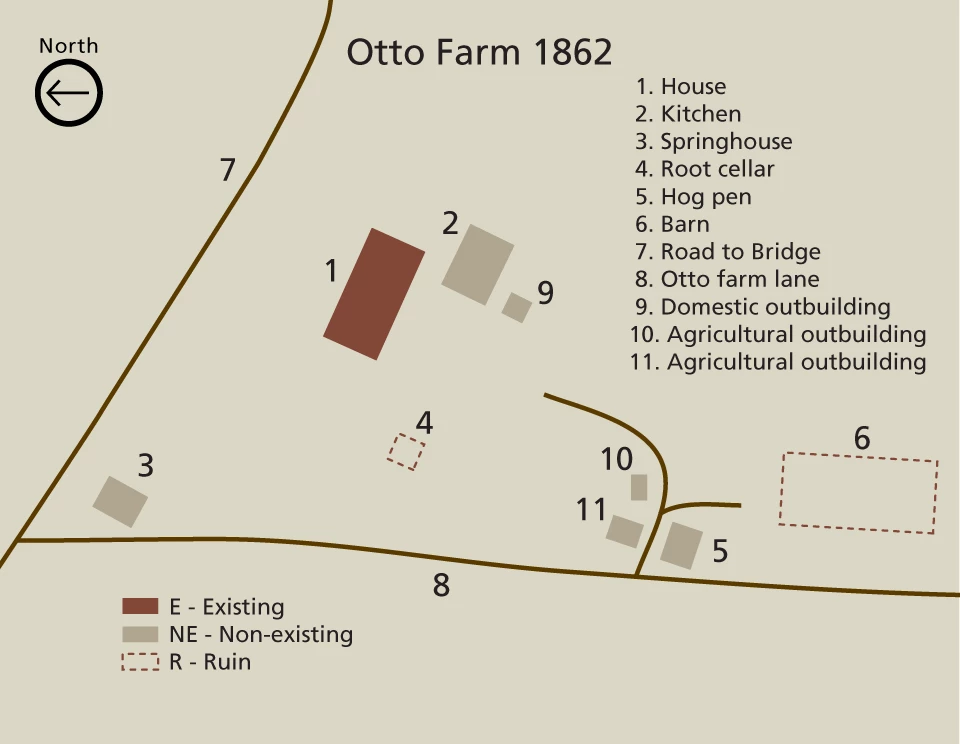
NPS Antietam / B.Baracz The John Otto Family and FarmAfter carrying the Burnside Bridge, Union forces advanced over and across the Otto Farm late in the afternoon of September 17, 1862. The Otto Family owned two enslaved people who assisted their six children in working their farm. It is from the stories told by Hillary, one of the enslaved, that we have a better understanding of the Otto Farm at the time of the battle.Establishment of the FarmThe farmhouse was constructed on about 90 acres, just southeast of the town of Sharpsburg. Unfortunately, not much of the farm buildings remain today, only the eggshell blue, timber frame house, a few stones from a cellar, and barn foundation remain. Fortunately, much of the original woodwork, floors, and hardware still survives in the house. No other house on the battlefield has as many remaining architectural features as the Otto Farmhouse.John Otto was the son of John David Otto who emigrated in 1795 from Germany. John was born in 1802 and as a youngster assisted his father with his tailor business located in Sharpsburg. He married Dorcas Miller in 1825 and soon after the couple purchased the land where they started their family. In the years leading up to the Civil War, John and Dorcas had six children two enslaved people living on the farm. The family and their close neighbors the Sherricks were members of the German Baptist Brethren Church and the Ottos made and donated the bricks that were used to construct the Dunker Church in 1853. Before the armies invaded Sharpsburg, records revealed that the Otto Farm was very prosperous. Unfortunately, tragedy struck on Christmas Eve in 1844 when Dorcas died. During the next few years, it can certainly be assumed that Aunt Nancy, mother of Hillary who was also enslaved, assisted John with raising the children. John would marry his second wife, Katherine Gardnouer in 1849. 
NPS Antietam The Maryland CampaignAgain, much of what is known today concerning the farm at the time of the battle comes from Aunt Nancy’s son, Hillary. He was the other enslaved person working the fields with John and his sons.Hillary remembered the Confederates showing up on the morning of September 15. The Ottos and Aunt Nancy provided food for the tired “rough” looking soldiers. John took his family away from the area on the 16, but historians are not sure where they went. In 1915, Hillary remembered that he returned on the evening of the 16 to check on the house and found someone had broken in! He eventually tracked the intruder down because, “he left the doors open while making his way through the house.” Hillary confronted the young soldier who then “left after a scolding, without saying a word.” During the battle, a Union brigade commanded by Col. Thomas Welsh, advanced across the area where the buildings were located and artillery was posted on the high ground south of the barn. On the left of Welsh’s men, was the division commanded by Gen. Isaac P. Rodman. A timely Confederate counter-attack led by A.P. Hill’s men struck the Federals in the Otto’s 40 acre cornfield, on the south end of the property. It was the action that unfolded on the Otto Farm that brought the bloody day to a close. 
NPS Antietam / B.Baracz After the Battle and FreedomFollowing the battle, John Otto returned home to find, “my house, bar, and granary were taken possession of...and used for a hospital purpose until November 4, 1862, during which time everything in and around it that could be of any service, was taken and used, including beds, furniture, and commissary stores.” In 1873, Otto put a claim into the government for $2,350.60. He only received $893.53 for the losses he and his family incurred in the fall of 1862.One of the outcomes of the battle was that President Abraham Lincoln announced the Emancipation Proclamation. Hillary remembered that John Jr. told him, “Now Hillary, you’re your own men. Pop wants to hire you, but you can go work where you please. If you decide to go away, and it happens that by and by you have nothing to do, come back and make your house with us.” Hillary stayed at the Otto Farm. John retired as a farmer and lived until 1884. He and his wives are buried in the Lutheran Cemetery in Sharpsburg. Starting in 1976, the Otto Farm became part of the Antietam National Battlefield. Today, The Final Attack Trail winds it’s way in and around the property of the Otto Farm. 
NPS Antietam / K.Snyder |
Last updated: September 15, 2023
